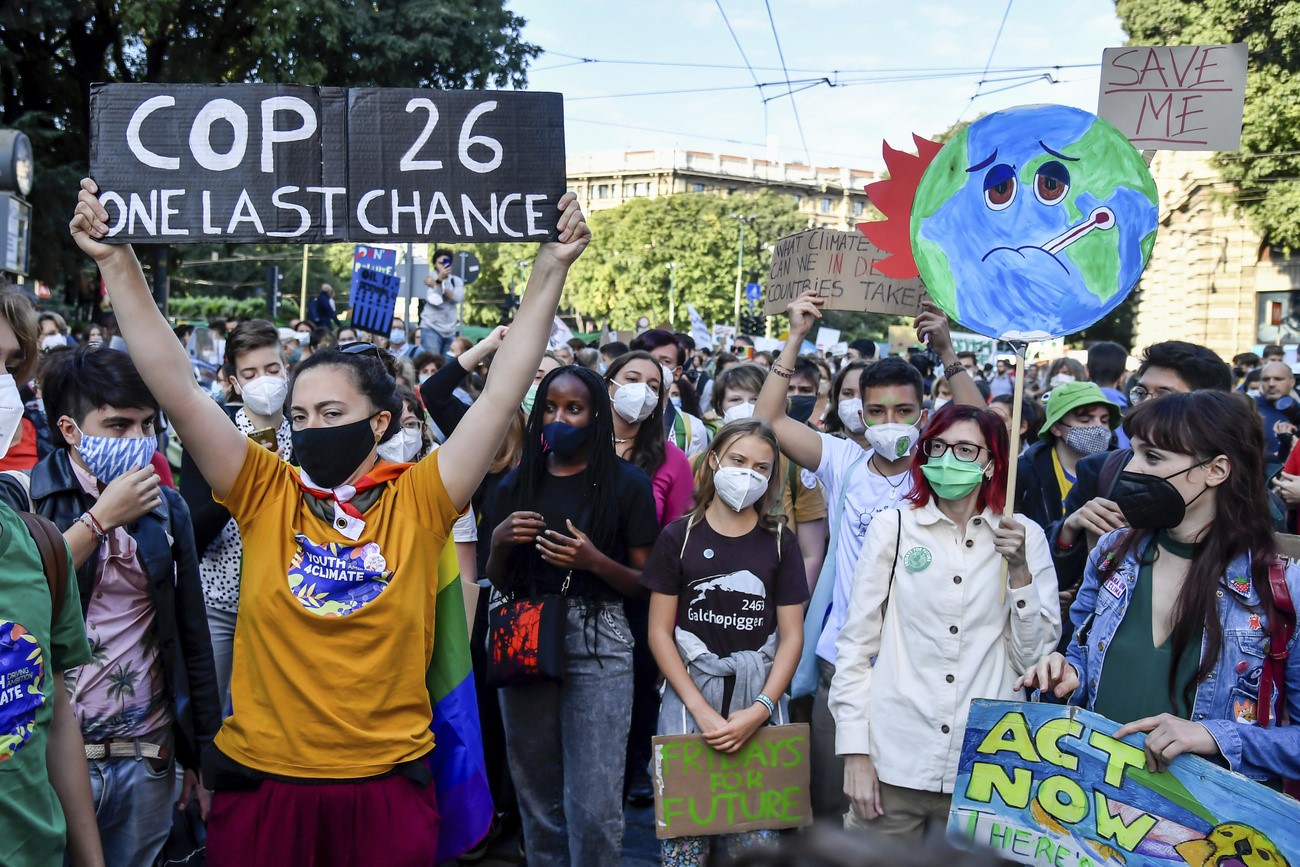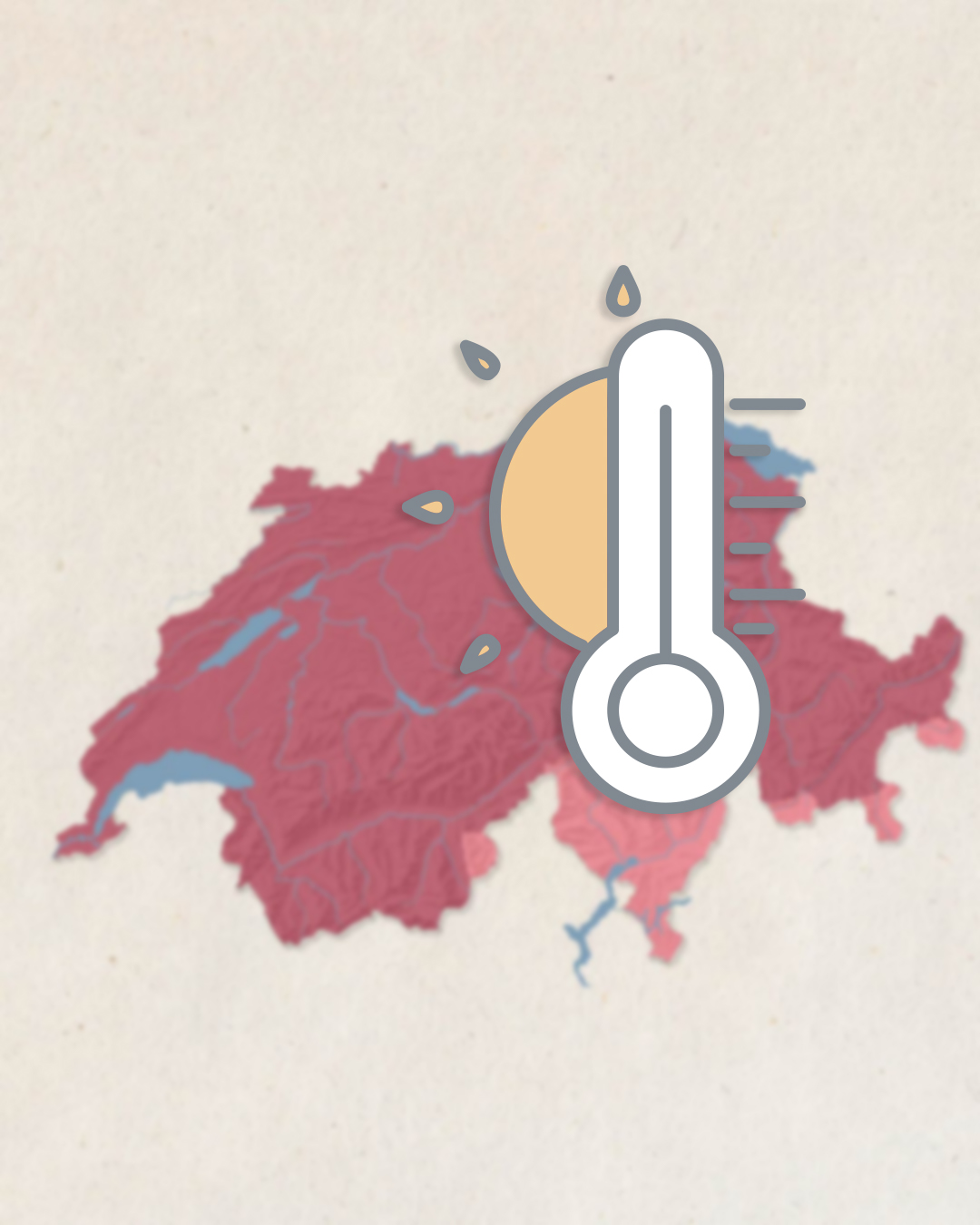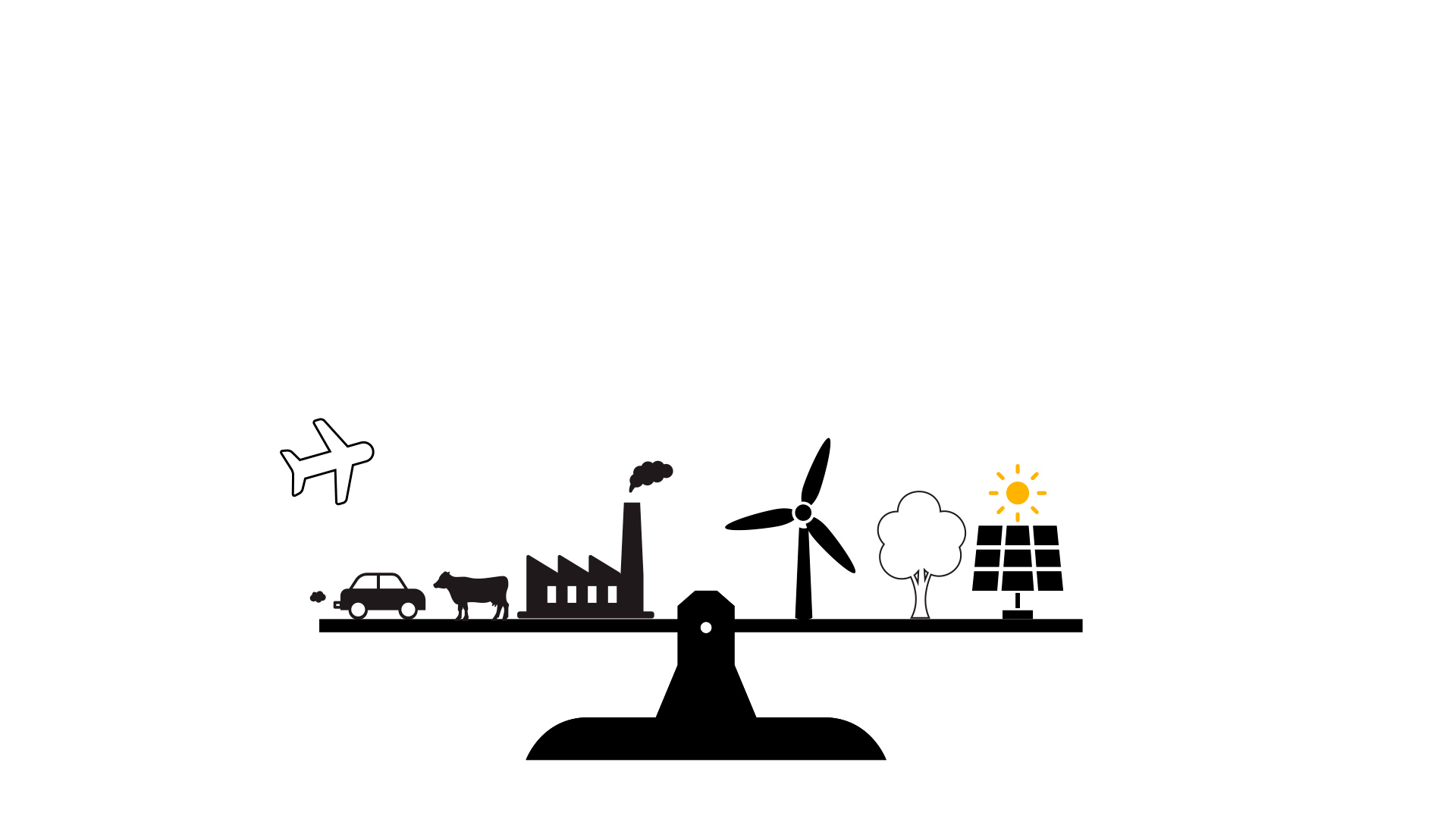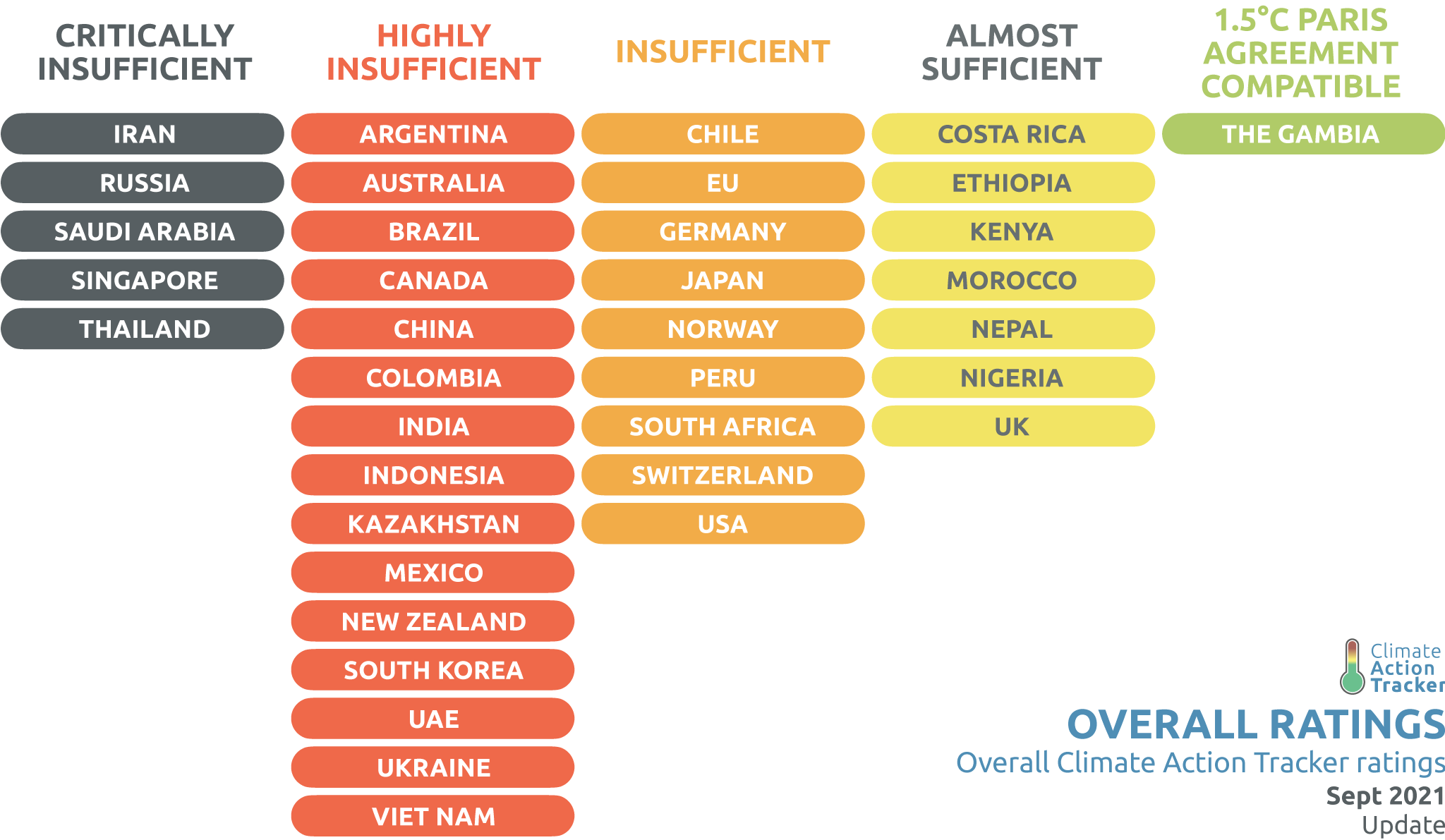
Switzerland’s ‘disappointing’ contribution to an emissions-free planet

Switzerland wants to achieve climate neutrality by 2050. But if all countries followed its path, the planet’s temperature could rise by 4°C by the end of the century.
Over 130 countries aim to achieve a net-zero emissions balance over the next 30 years. This means that they must not generate more greenhouse gases than natural ecosystems and technologies for isolating CO2 from the atmosphere are able to absorb.
This objective will be reaffirmed at the United Nations Climate Change Conference (COP26), which opens on Sunday and is considered essential to limiting global warming to 1.5°C compared with pre-industrial levels – the threshold agreed internationally in the 2015 Paris Agreement.

More
Is COP26 the last hope for limiting global warming?
Switzerland has committed itself to achieving climate neutrality by 2050. So have the European Union and the United States, which are among the world’s biggest emitters of greenhouse gases. China and Russia, on the other hand, have set themselves more distant goals.
Switzerland is particularly vulnerable to climate change. The average temperature has already risen by nearly 2 degrees over the past 150 years, double the global average. The most tangible effect of warming is the melting of glaciers.

More
The Swiss Alps are hotter than ever
Electric cars and heat pumps
Switzerland aims to reduce emissions generated by the transport, building and industry sectors by 90%. Road traffic alone is currently responsible for around a third of all emissions.
Like elsewhere in Europe, giving up fossil fuels presupposes the electrification of mobility and heating for buildings. In the (ideal) scenario imagined by the Swiss authorities, 3.6 million battery-powered electric cars will be on the roads by 2050, compared with around 70,000 today. They also envisage there will be 1.5 million heat pumps, a five-fold increase.
Read: Electric cars are on the way, but is Switzerland ready?
The electricity of the future will be produced almost exclusively by hydroelectric power plants – which already supply two-thirds of the electricity consumed in Switzerland today – and from other renewable sources, in particular the sun. Photovoltaic production is slated to increase from 2.5 to 34 terawatt hours per year.
This turnaround will require an average yearly investment of around CHF13 billion (US$ 14.1 billion), and a total of CHF387 billion by 2050, according to estimates by the Swiss Bankers Association and the Boston Consulting Group. This figure represents around 2% of GDP.
Emissions that cannot be reduced, for example in agriculture and waste treatment, will instead be offset by technologies for removing CO2 from the atmosphere. Switzerland is at the forefront of the field of so-called negative emissions. Recently, in Iceland, the Swiss company Climeworks inaugurated the largest plant in the world capable of filtering CO2 from the air and storing it permanently underground.

More
What Is Carbon Offsetting? Explained in 2 Minutes
Reducing emissions, but on what legal basis?
Switzerland’s main tool for reducing emissions is its law on CO2. This provides, among other measures, for a levy on fuel oil and natural gas used for heating, the obligation to offset emissions generated by transport, and the possibility of achieving part of the reduction of greenhouse gases abroad.
In September 2020, the parliament adopted a complete overhaul of the law. Under the new bill, Switzerland should have reduced its emissions by 50% by 2030 (compared with 1990 levels), at least 37.5% of which was to be achieved domestically.
However, the revised CO2 law was rejected by Swiss voters, who baulked at the introduction of new rules, such as a tax on airline tickets. The government now plans to extend the instruments contained in the current law, which is due to expire at the end of this year. A more in-depth reform, with no new taxes, will be presented in 2022.
Swiss climate policy is not ambitious enough, say environmental organisations and climate activists, who have started demonstrating again in cities across the country, after a hiatus caused by the Covid-19 pandemic. However, criticism stretches beyond the country’s borders.
More
Switzerland a country of concern
Climate Analytics, a Berlin-based climate science and policy NGO, considers Switzerland’s contribution to the Paris Agreement “insufficient”. If the Swiss trajectory were followed globally, the temperature would rise by 3-4°C by the end of the century, the organisation wrote in its assessment of Switzerland.
Switzerland, like Australia, Brazil, Indonesia, Mexico, New Zealand, Russia, Singapore and Vietnam, is a country “of particular concern”, according to Climate Analytics. Since the adoption of the Paris Agreement in 2015, none of these countries have ratcheted up their ambitions for 2030.
Switzerland risks falling behind other wealthy European nations, which now have tighter climate obligations under the European Union’s 2030 target (55% emissions cut compared with 1990 levels), Climate Analytics noted. To comply with its international commitment, the organization stressed, the Confederation should aim to reduce domestic emissions by at least 61%.
Read more: Switzerland misses its emissions targets
Switzerland’s insufficient performance is “very disappointing”, wrote Ryan Wilson, an analyst at Climate Analytics, in an email to SWI swissinfo.ch. “It is crucial that wealthy countries like Switzerland are pressured to ratchet up the ambition of their targets to align with the Paris Agreement’s 1.5°C temperature goal, while providing far more resources to assist developing countries to achieve emissions reductions.“
Africa sets an example
The Gambia is the only country whose climate policy is compatible with the 1.5°C target, according to an analysis by the Climate Action Tracker (CAT). Its report, the result of collaboration between Climate Analytics and the New Climate Institute, looked at 36 countries and the European Union.
The smallest state in mainland Africa has launched forest, mangrove and savannah restoration projects, as well as the construction of a large solar power plant. The Gambian government has recognized that the transition to a sustainable and affordable energy system “is a milestone for the country’s socio-economic development,” wrote the CAT.

Translated from Italian by Julia Bassam

In compliance with the JTI standards
More: SWI swissinfo.ch certified by the Journalism Trust Initiative





























You can find an overview of ongoing debates with our journalists here . Please join us!
If you want to start a conversation about a topic raised in this article or want to report factual errors, email us at english@swissinfo.ch.